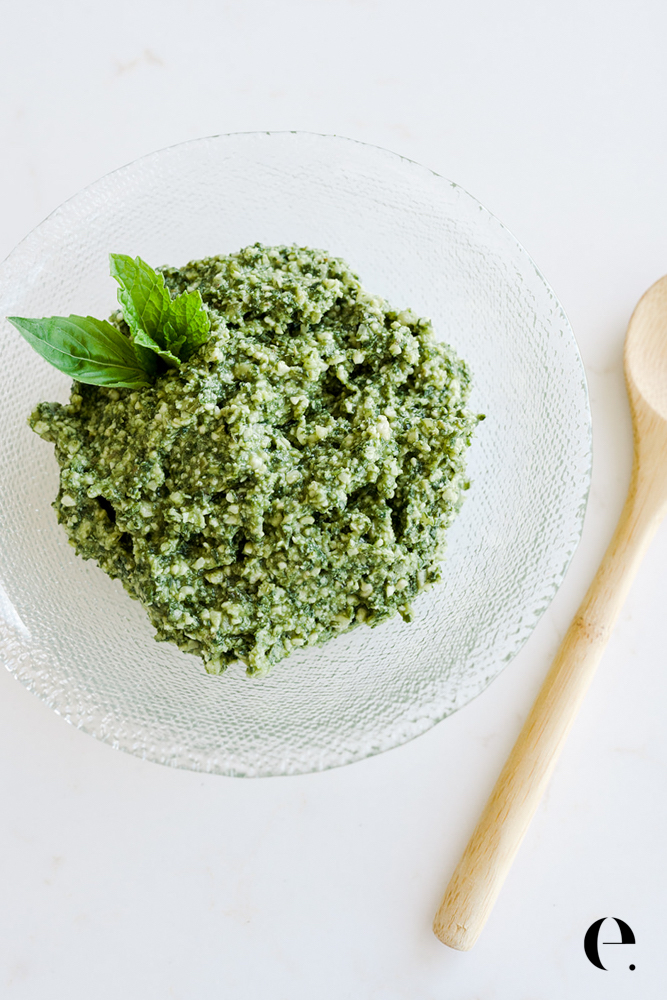
I’ve been making this vegan pesto recipe for so long that I think I like it even more than the original.
I love it on pasta and it’s also awesome with veggies, spread on a baguette, or even on top of chicken or fish if you’re more looking for dairy-free and not necessarily vegan.
Honestly, I don’t even miss the cheese with the perfect combination of the ingredients in this dish. But, if you don’t care if this is vegan and you’re simply looking for a lactose-free version, go ahead and add some real Parmesan Reggiano if you’d like as it’s one of the healthier cheeses and happens to be 100% lactose-free (the real stuff, not the fake stuff, see notes below). Of course, don’t add it if you want to keep this vegan.
This vegan pesto is pretty budget-friendly, too, if you grow your own herbs and/or buy the nuts and seeds in the bulk bins at the store (only buy what you need).
Vegan Pesto Recipe Ingredients
Fresh Basil (+ Sometimes Mint)
Obviously! We need fresh basil. The great thing about pesto is that it’s SUPER flexible. You’ll need about two cups total of loosely packed herbs to make this pesto. I like to add a handful of fresh mint, but you can use all basil if you prefer. But holy organic cow try it with the mint! Mint and basil go together like peanut butter and jelly. Plus, mint grows like crazy in the spring, so grab yourself a little starter plant and enjoy fresh mint for months on end (BTW, here are 10 more ways to use fresh mint that you can check out after you read this post.)
Fresh Garlic
Grab yourself a whole clove of raw garlic for this dish. Avoid the stuff in jars if you can, the fresh stuff tastes so much better, stores easily on your counter or in a cabinet for months, and is actually one of the most antioxidant-rich foods on the planet. Fresh garlic releases compounds when it’s chopped that make it even better for you, just another reason to use fresh.
I will say though, raw garlic is potent, so that’s why I only use one clove. If it’s too strong for you, you can saute it in the extra virgin olive oil you’re going to use here to mellow it out. Either way, put this ingredient in the food processor first to chop it into little bits before adding the rest of the ingredients, it just saves you from having to manually chop it and saves some dishes.
Cashews
I use cashews (not roasted, unsalted) and pumpkin seeds (not roasted, unsalted) as my secret ingredients to get that slight texture of little crumbles without adding any cheese to this dish. Cashews (not roasted, unsalted) are mild and soft and give this vegan pesto recipe excellent flavor.
Look for “raw” cashews, which aren’t actually raw because all cashews are steamed to remove a film on the outside of them that is toxic. (Don’t worry, cashews you buy at the store are completely safe and even good for you in small quantities like this.) If cashews don’t work for you, substitute raw almonds or even the old pesto stand-by: pine nuts. Or, more raw pumpkin seeds work if you can’t do nuts. That’s the great thing about pesto in general, it’s super flexible.
Raw nuts are often soaked in healthy recipes, but in this case, do NOT soak the cashews. It’s better when they’re not soaked (and cashews are flash steamed before you buy them anyway).
Pumpkin Seeds
I use a combo of cashews and raw pumpkin seeds (sometimes called pepitas) for extra nutrition, fiber, and textures. Raw pumpkin seeds are full of vitamins, minerals and antioxidants, and make a great combo here. Like the cashews, look for raw (not roasted and unsalted)—they are the little green ones. But hey, the roasted hulled ones (the ones that were in the shell roasted and look more like typical sunflower seed snacks) would be delicious here, too.
Fresh Lemon
Some people debate if lemon is a traditional ingredient in pesto. I think it’s a must in this vegan pesto recipe. The bright flavors and acid of lemon make the basil (and mint if you’re using it) really pop. Plus, it adds extra enzymes and nutrients to this dish.
Use fresh lemon juice, and add a teaspoon of zest for that extra bright flavor. When you zest the lemon, be sure to just take the yellow part as the white part of the peel (the pith) is extra bitter. You just want the yellow part in your zest as that’s where the essential oils live. Just one or two passes over the yellow on a fine grater or rasp will do it for you.
Of course, wash your lemon extra well since you’re using the zest, and grab an organic one if you can. If you can’t find a fresh lemon, you can still make this dish without it.
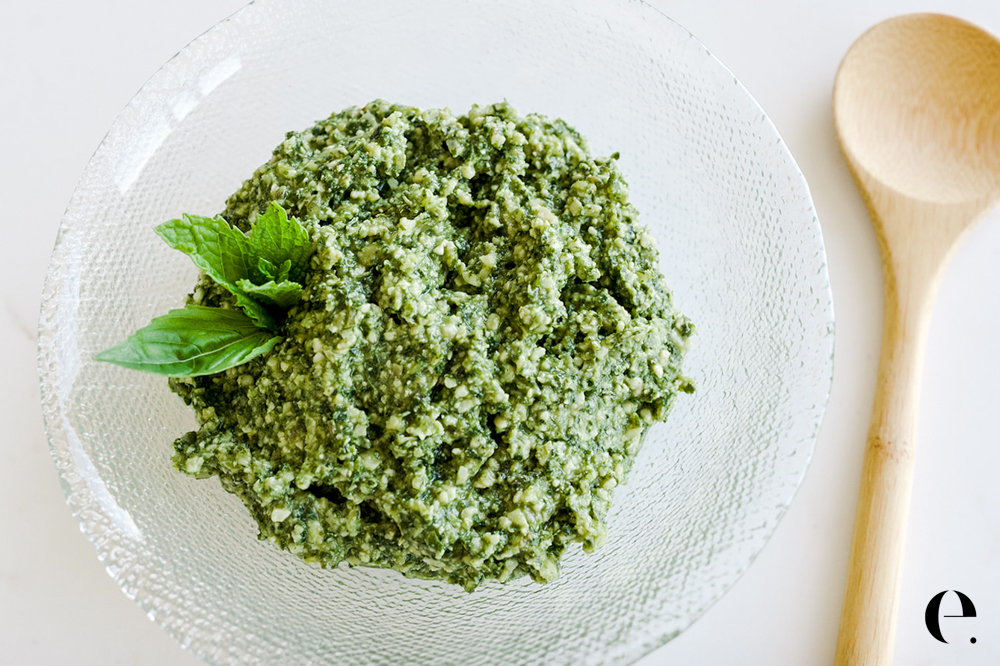
Extra Virgin Olive Oil
Of course, we need the EVOO! Extra virgin olive oil is right on track with this recipe as it’s full of nutrients and good-for-you ingredients. Be sure you’re getting a good one that is REAL olive oil because believe it or not, there is a huge black market for fake olive oil. It’s actually a huge international crime ring. I know it sounds like I’m kidding but I’m not—there are bad people in this world who cut your olive oil with cheap, nasty, lesser oils then sell it to you at full price. Not only is that just plain mean, it affects your health.
I buy my organic extra virgin olive oil from Thrive Market because it’s a really great price and they do their homework to make sure what’s in the bottle is actually real olive oil.
Sea Salt
Since there’s not any cheese vegan pesto, don’t skimp on the salt! Typically, parmesan would contribute to some of the salt here, but since we’re not using it, add 1/4 teaspoon of sea salt, then a few more shakes to taste at the end.
I like to use sea salt to avoid the anti-caking powder added to conventional table salt—that stuff isn’t natural and affects the flavor of your food. Save your coarse sea salt for another dish and use finer sea salt so it dissolves into the pesto. I use the Real Salt brand, you can get it at most grocery stores in the natural foods section.
Want an Easy Dinner? Turn it into Vegan Pesto Pasta
This vegan pesto recipe makes a fantastic as a dip for veggies or spread it on a toasted baguette or crackers for an appetizer or snack. Or toss it with hot pasta (reserve some of the hot pasta water to make a sauce, instructions below) to make a delicious lunch or dinner that’s honestly just as good cold the next day.
Choose the best pasta noodles that work for you. Rice pasta has come a long way as a gluten-free option that’s great. And be sure to salt the pasta cooking water with at least a tablespoon of salt and add an extra 1/2 teaspoon or so of sea salt to the sauce to make sure your pesto pasta isn’t bland.
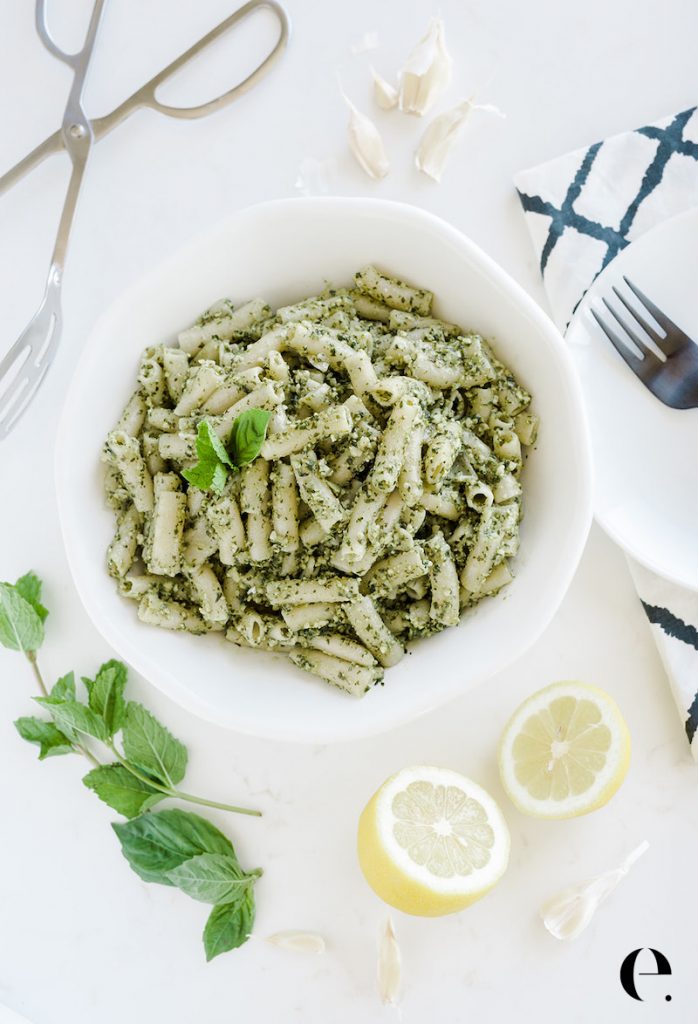
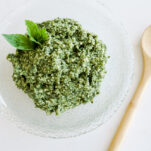
The Best Vegan Pesto Recipe
- Prep Time: 10 minutes
- Cook Time: 0 minutes
- Total Time: 10 minutes
- Yield: About 1 cup 1x
Description
I’m obsessed with this cheese-free vegan pesto, even more than the original! It’s fantastic as a dip for veggies, spread on a toasted baguette or crackers, or tossed with hot pasta (save the pasta cooking water and use up to a cup with this recipe to make a pasta sauce). If you love this recipe, leave a star rating in the comments below to help with readers in our community.
Ingredients
- 1 large garlic clove, peeled
- 1/2 cup raw cashews
- 1/4 cup raw pumpkin seeds
- about 2 cups fresh basil leaves
- about 1/3 cup fresh mint leaves (omit or use more basil if desired)
- 1 teaspoon lemon zest
- 1 lemon, juiced (about 1 tablespoon fresh lemon juice, more or less to taste)
- 1/4 teaspoon sea salt, or more to taste
- about 1/4 cup, plus 2 tablespoons extra virgin olive oil (a few tablespoons more depending on the texture you want)
Instructions
Food Processor Method (my preferred method):
- Place the garlic in a food processor and run until it is well minced. This just saves the step of finely chopping it before you add it. Zest the lemon before you juice it. Wash it before you zest it.
- Add the cashews, pumpkin seeds, basil, lemon zest, lemon juice, and sea salt. Run the food processor continuously and slowly stream in the extra virgin olive oil through the top spout. Stop and scrape down the sides.
- Continue to process until the mixture is smooth, adding a touch more olive oil as needed until the desired texture is achieved.
If using this for pasta, salt the water and cook 14-16 ounces (usually one package) of pasta. Reserve a few cups of the pasta cooking water. Toss the pesto with hot pasta and add up to 1/4 cup of the hot cooking water at a time to turn the pesto into a sauce (usually 1/2 cup to 3/4 cup total). Add a few big pinches of sea salt to taste and garnish with fresh basil leaves if you have any left. We like it with good-quality spaghetti or penne.
Blender Method:
Same as above but finely chop or press the garlic first then add it with the rest of the ingredients. Be careful to not over blend and make basil soup, use your blender like a food processor and pulse it while scraping down the sides every few pulses. I prefer to not use a blender as it’s hard to get the right texture and it can get stuck in the blades, but work with what you’ve got.
Mortar & Pestle Method:
Grind the garlic with a big pinch of sea salt first, then add each ingredient, one at a time in the order they are listed, and grind away until you have the texture you want.
Notes
If you don’t care either way if this is vegan or not, it still makes an incredible variation of traditional pesto by adding real Parmesan Reggiano:
I sometimes use real Parmesan Reggiano because it’s actually one of the healthier cheeses. Real Parmigiano Reggiano from Italy is 100% lactose-free and made to uber strict standards. Don’t confuse it with American parmesan cheese, which is full of preservatives and definitely not healthy at all. Real parmesan will be labeled Parmigiano Reggiano, stamped on the rind, and it will indicate that it’s from Italy. All that to say, if you’re cool with a little real Parmigiano Reggiano and want to fold in 1/4 to 1/2 cup (finely grated) after you’ve processed it with the olive oil, go for it. Stir it in at the end after processing so it doesn’t turn to mush.
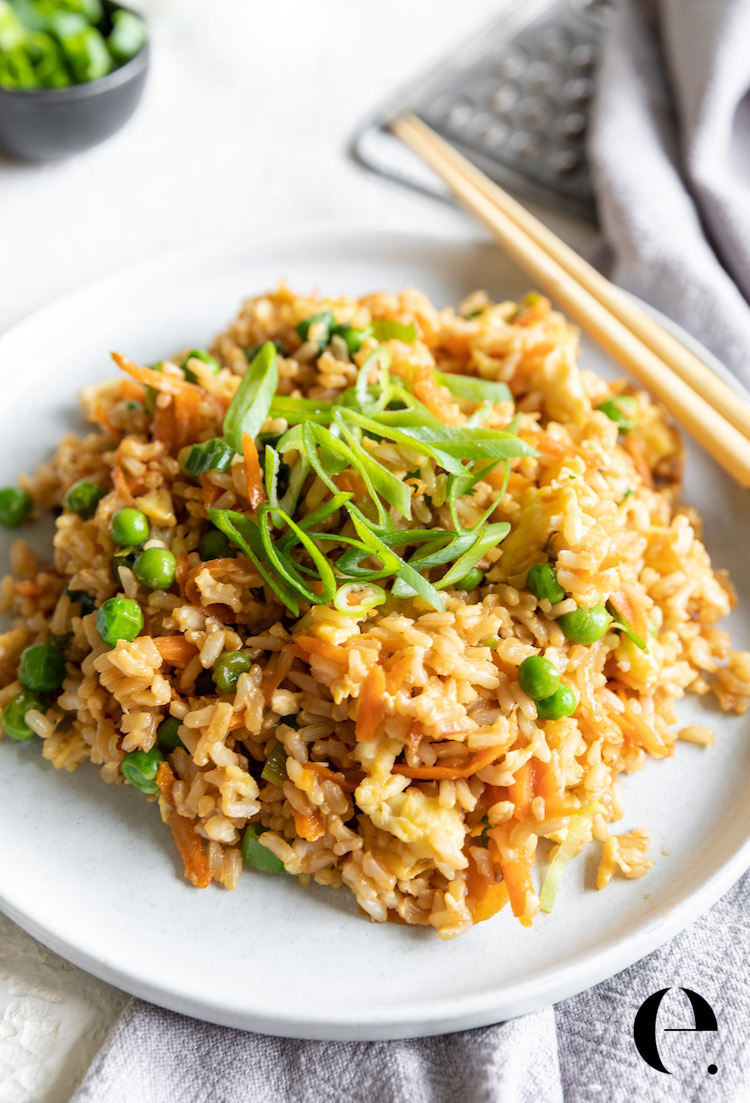
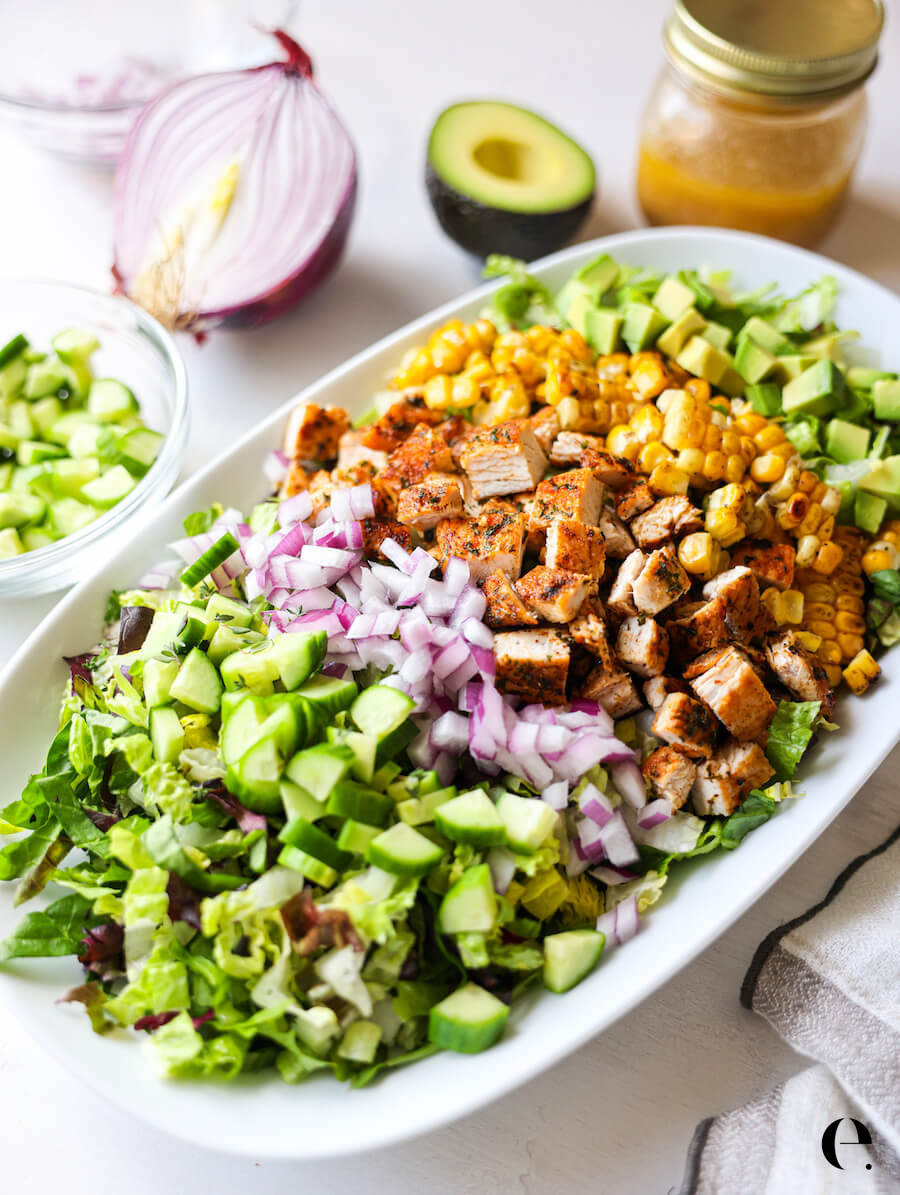
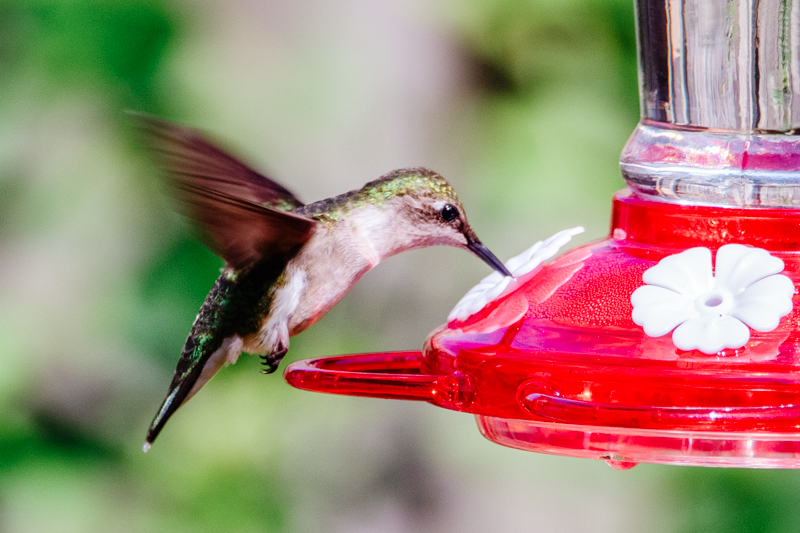
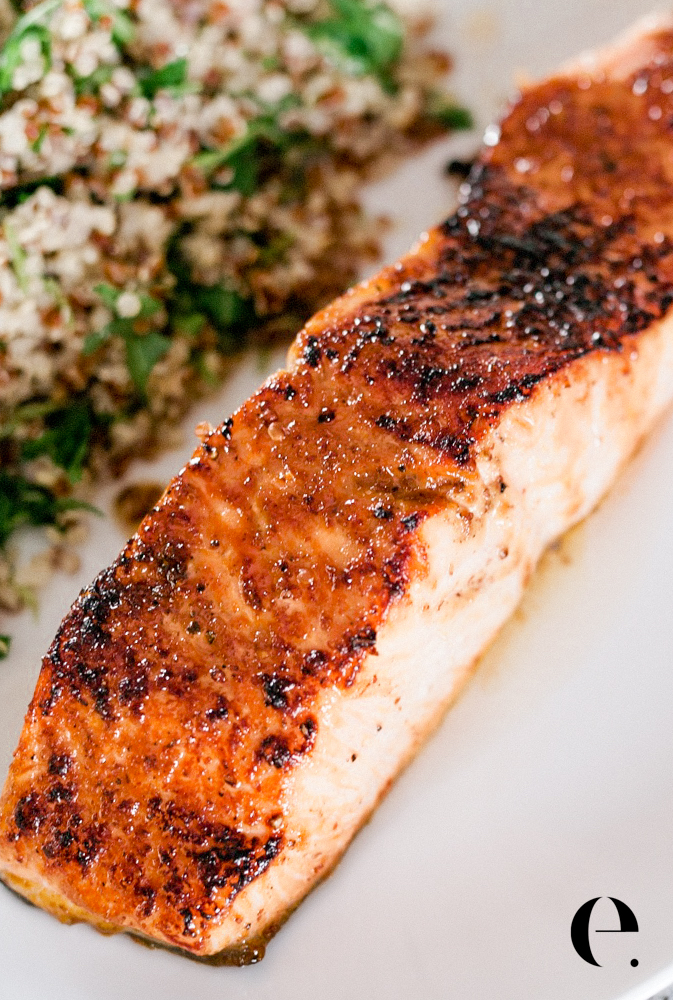
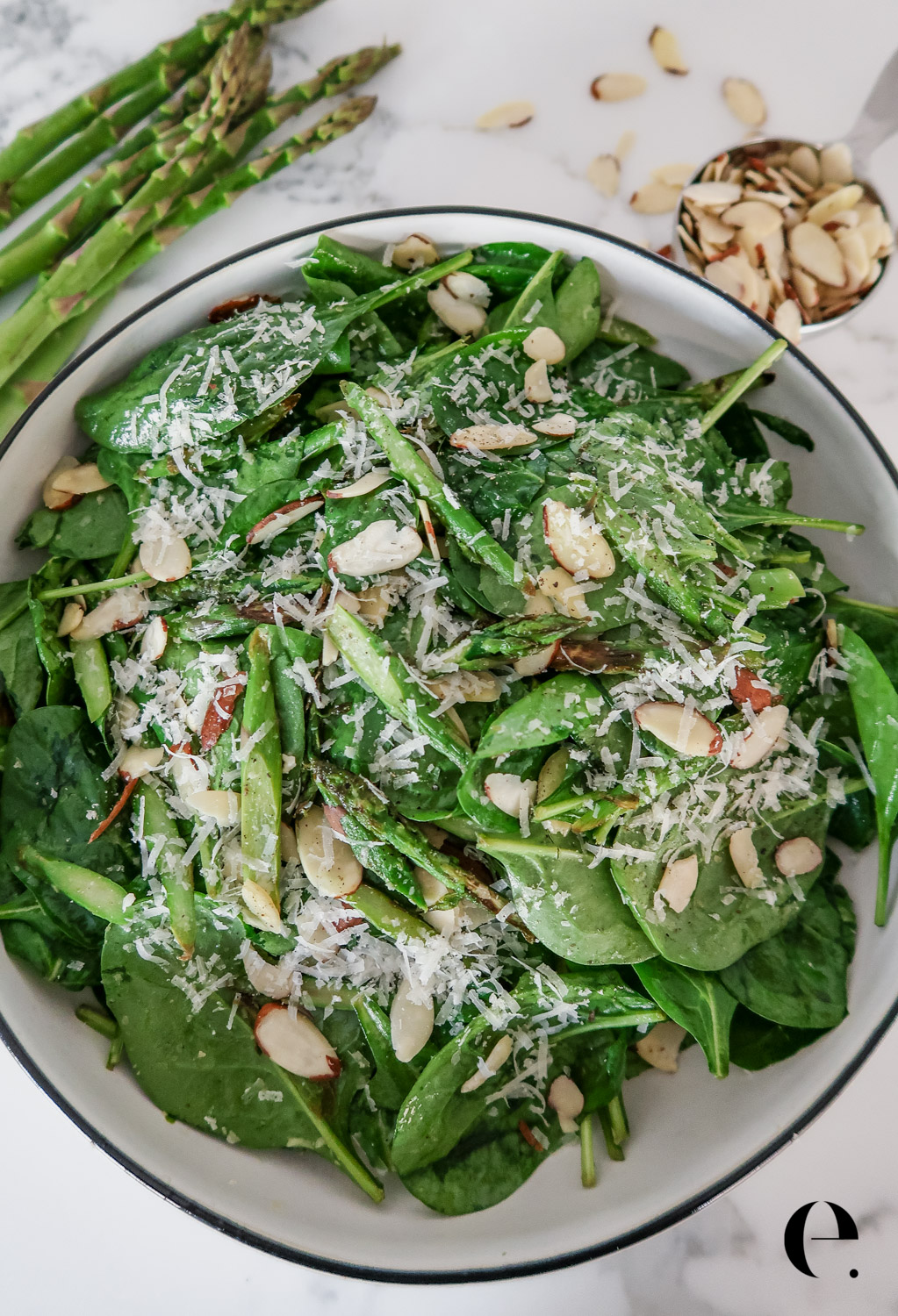
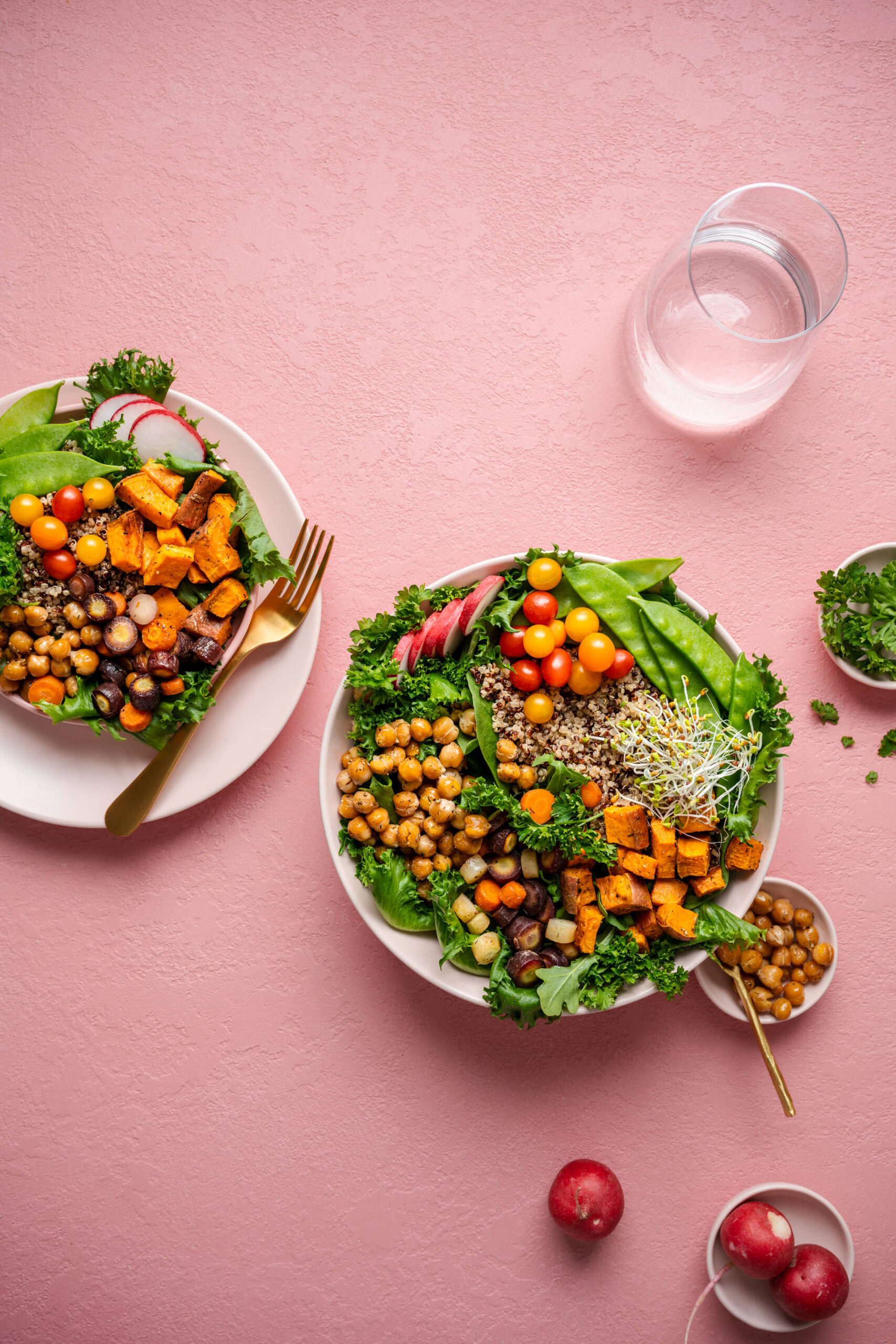
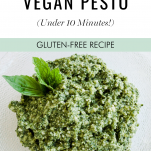
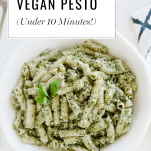

I have citrus allergies. How can you sub the lemon?
Great question, I would substitute the lemon with white wine vinegar or champagne vinegar (even red wine vinegar will work). Vinegar and lemon juice are both acids so the vinegar can help give it that nice flavor. But use less, start with 1/2 teaspoon and go up to 1-2 teaspoons depending on your flavor preferences. ~E
Sensational. Followed the recipe to the letter. Took your suggestion and added the Parmigiano Reggiano. Fabulous. I wouldn’t change I single thing.
Glad to hear it!
I just did it and I love it! I modified some things: since I didn’t have cashews I used peanuts, added 2 tbsp of nutricional yeast and a little bit of water (2 – 3 tbsp), and it turned out perfect. The mint gives it such a special touch, thank you so much for this!!